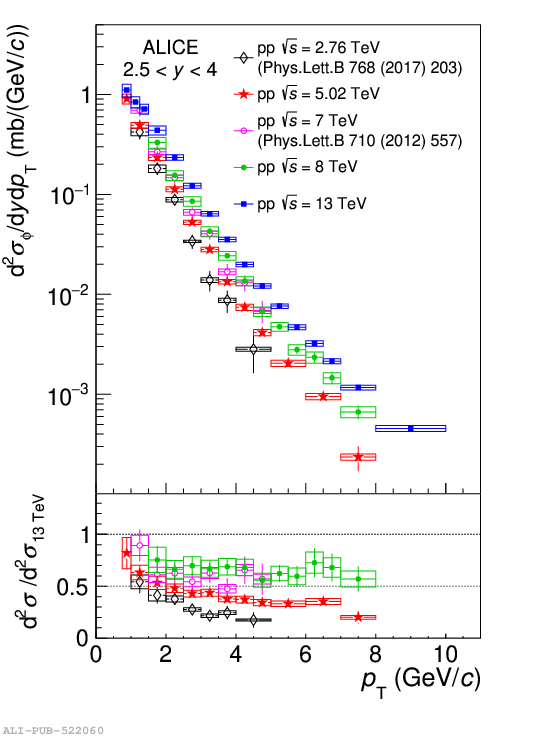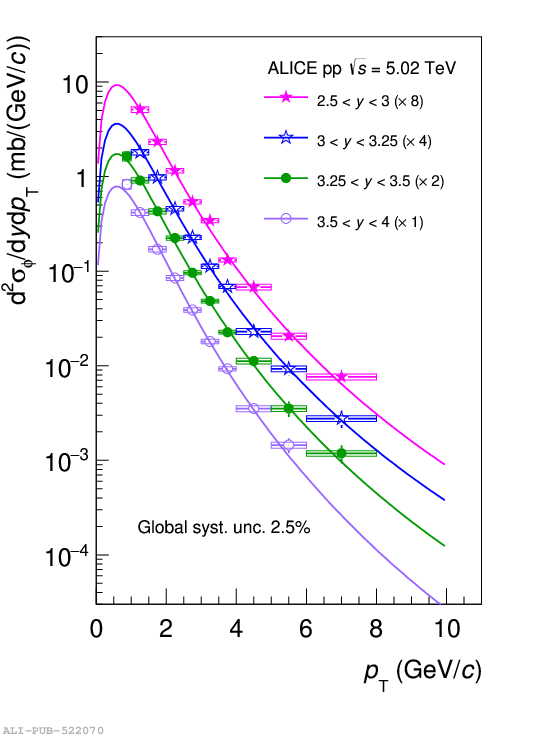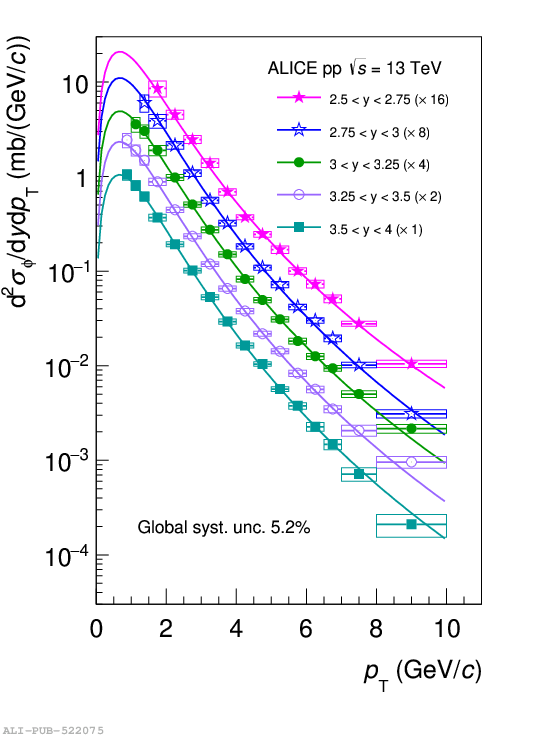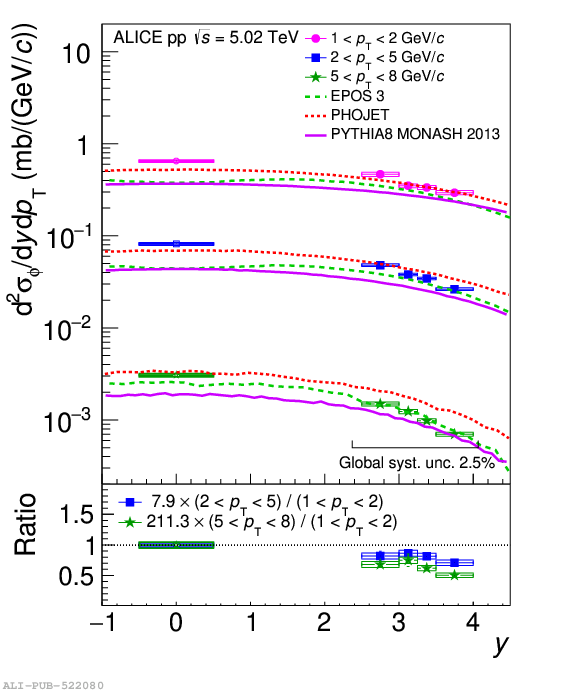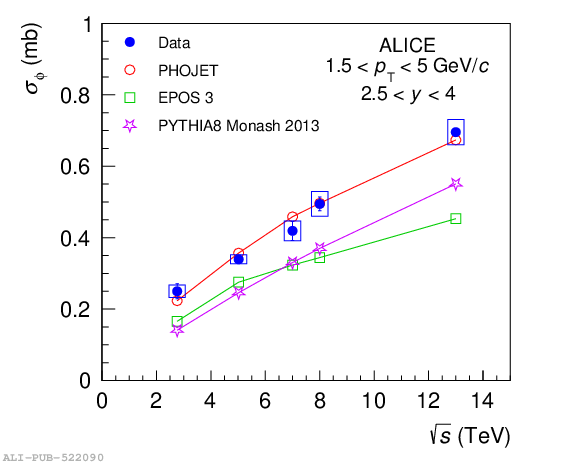The production of $\phi$ mesons has been studied in pp collisions at LHC energies with the ALICE detector via the dimuon decay channel in the rapidity region $2.5 <~ y <~ 4$. Measurements of the differential cross section ${\rm d}^2\sigma/{\rm d}y {\rm d}p_{\rm T}$ are presented as a function of the transverse momentum ($p_{\rm T}$) at the center-of-mass energies $\sqrt{s}=5.02$, 8 and 13 TeV and compared with the ALICE results at midrapidity. The differential cross sections at $\sqrt{s}=5.02$ and 13 TeV are also studied in several rapidity intervals as a function of $p_{\rm T}$, and as a function of rapidity in three $p_{\rm T}$ intervals. A hardening of the $p_{\rm T}$-differential cross section with the collision energy is observed, while, for a given energy, $p_{\rm T}$ spectra soften with increasing rapidity and, conversely, rapidity distributions get slightly narrower at increasing $p_{\rm T}$. The new results, complementing the published measurements at $\sqrt{s}=2.76$ and 7 TeV, allow one to establish the energy dependence of $\phi$ meson production and to compare the measured cross sections with phenomenological models. None of the considered models manages to describe the evolution of the cross section with $p_{\rm T}$ and rapidity at all the energies.
Eur. Phys. J. C 81 (2021) 772
HEP Data
e-Print: arXiv:2105.00713 | PDF | inSPIRE
CERN-EP-2021-057
Figure group







